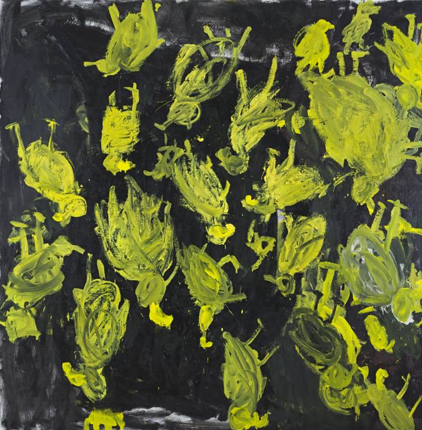Andrew Graham-Dixon on the world turned upside-down in the work of Georg Baselitz, at the D'Offay Gallery
IS GEORG BASELITZ the greatest living German artist? ''Recent Paintings by Georg Baselitz'', at Anthony D'Offay Gallery, demonstrate consistency if nothing else, indicating his continuing commitment to topsy-turviness. Everything in Baselitz's paintings, for more than 20 years now, has been presented upside-down. At D'Offay you encounter pictures of wrong-way-up birds, mostly, exercises in free-form aggression and enigmatic with it. Cartoon-like scrawls on inchoate backgrounds, the inverted avian inhabitants of these canvases gather in flocks to no apparent purpose. Baselitz has always delighted his admirers with what they like to think of as the immediacy of his art. His new works, painted with extremely evident rapidity, are as immediate as they come.
Watch the birdie. A series of quick, rudimentary variations are played on the theme. An upside-down parrot perches on an upside-down chair (The Wilderness in the Room). Similar doodle-birds share another canvas with, you can just make out, a table set with knife, fork, spoon and a large French loaf, painted postbox red (Doctor Bread). More of the same, this time in yellow on a black ground, crop up in close formation in a painting whose title wants to know Where is the Yellow Milk Jug, Mrs Bird? Where indeed? Mystification prevails.
The exhibition is at least as remarkable for its catalogue as it is for its pictorial contents. The former has been written by Norman Rosenthal, the Royal Academy's director of exhibitions, who makes surprisingly large claims for a body of work which would seem, on the face of it, to have few pretensions to major art historical significance. ''Nothing like these paintings has been seen before,'' he writes. ''Extraordinary paintings shock, because one way or another the artist has looked...


